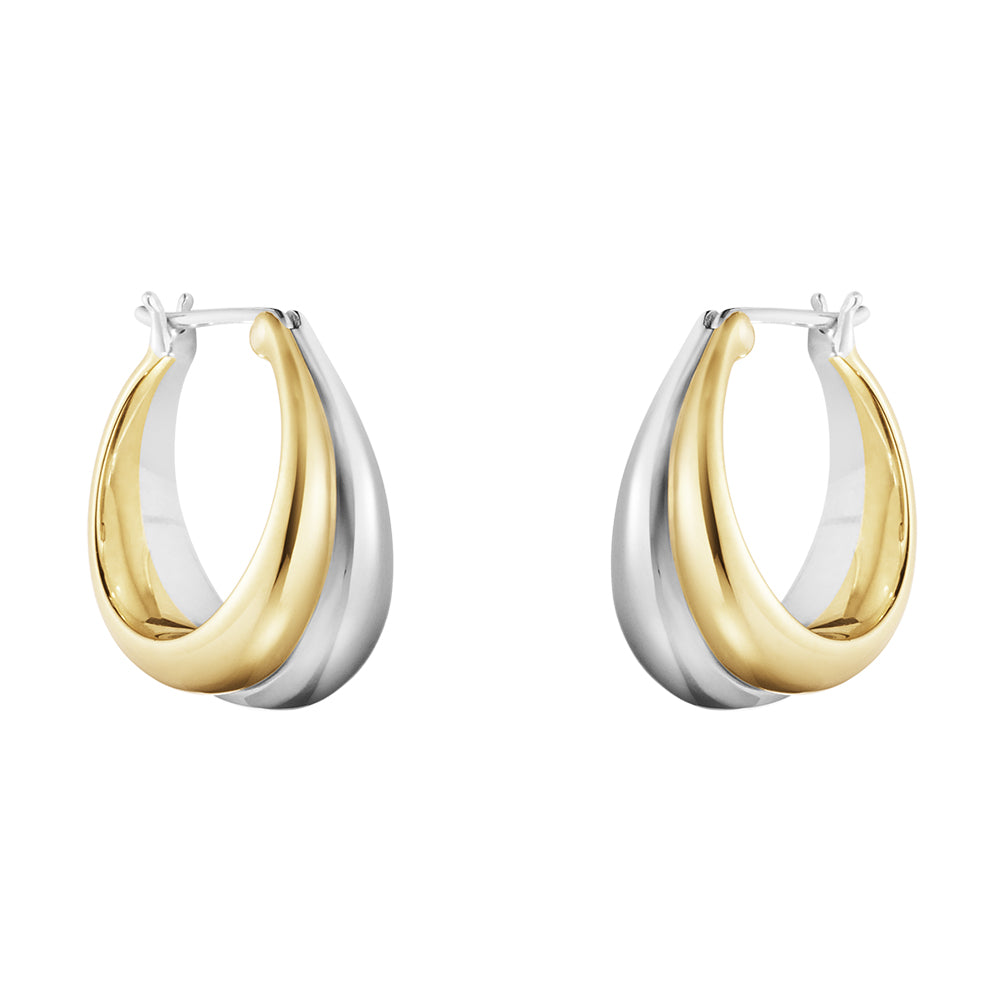
When Can You Change Your Earrings Safely & Smartly
Introduction
Changing your earrings for the first time isn’t just a style decision—it’s a delicate milestone in your piercing’s healing journey. The right timing can mean the difference between a smooth, infection-free experience and long-term damage to your ear tissue.

Why Timing Matters More Than You Think
For many, the urge to swap out piercing studs comes quickly—perhaps after spotting a pair of glittering hoops in a shop window or receiving a thoughtful jewelry gift. But timing your first earring change isn’t just about fashion; it’s about protecting a vulnerable, healing wound. Swapping too soon is akin to forcing a fresh wound to endure friction before the tissue is fully knit together—a subtle movement can tear microscopic blood vessels, extend inflammation, and slow collagen formation.
According to the American Academy of Dermatology (AAD), a fresh ear piercing is essentially an open wound that requires weeks to months of uninterrupted healing. The AAD emphasizes that disturbing the jewelry too soon can “reopen the wound, introduce bacteria, and delay full healing”. Research in wound care demonstrates that even minor disruptions in early epithelialization can triple healing time due to repeated inflammatory cycles. Understanding this allows piercing enthusiasts to approach the first jewelry change with both patience and scientific awareness.

Think of the skin and tissue around your piercing as the mortar in a newly built brick wall—it needs time to solidify before it can bear any movement or stress. Remove the “brick” too early, and you compromise the structure. This analogy is more than metaphorical; it reflects actual biomechanical principles. The tensile strength of early collagen fibers is insufficient to resist shear forces, meaning the new earring can literally tear through the forming tunnel, creating micro-tears invisible to the naked eye.
This healing timeline isn’t arbitrary. Your skin’s epithelial cells work to form a thin protective layer inside the piercing tunnel, a process known as epithelialization. This microscopic sheath acts like wallpaper lining a new corridor—it must be complete before you slide a new earring through without damaging the tissue. Failure to respect this process not only increases infection risk but also can result in uneven tunnels, prolonged tenderness, or the need to restart the healing cycle entirely.
Quick Reference: When Can You Safely Change Earrings?
Earlobes: 6–8 weeks minimum
Cartilage (helix, tragus, rook): 3–6 months, up to 12 months for sensitive ears
Signs of readiness: No redness, swelling, or tenderness; earring rotates freely; no discharge; tissue feels smooth
Tip: Even if the calendar suggests readiness, always assess tissue integrity before changing
Individual variability plays a major role. Immune system efficiency, local blood flow, skin thickness, minor daily trauma, and piercing technique all influence readiness. Scientific studies show that even minor deviations can extend healing by several weeks.

Standard Healing Timelines: Earlobes vs. Cartilage
While many blogs casually throw out numbers like “6–8 weeks,” the reality is far more nuanced. Healing duration depends on location, body type, and aftercare diligence. Understanding the difference between lobe and cartilage healing is crucial for safe earring changes.
Earlobes: Typically 6–8 weeks. Lobes are fleshy, richly vascularized, and lack dense connective tissue, allowing faster recovery. Their elasticity reduces friction stress, meaning minor rotations or gentle cleaning rarely disrupt healing. Even within this window, subtle individual differences exist: earlobe thickness, personal metabolic rate, and minor micro-traumas from pillow contact or headphones can influence readiness.
Cartilage: Helix, tragus, and other upper-ear piercings may take 3–6 months or more. Cartilage has lower blood flow, making it vulnerable to infection and slower to regenerate. Minor trauma, pressure from sleeping, headphones, or tight hats can exacerbate swelling. Studies show cartilage has only about 10–15% of the blood supply compared to the earlobe, making careful observation critical during jewelry swaps. Even a tiny misalignment can create perichondrial stress, potentially leading to keloid formation or permanent deformation.
Multiple piercings: Healing can be extended by 20–30% due to shared immune resources. Simultaneous piercings may compete for collagen synthesis and local immune surveillance, meaning a seemingly “ready” lobe may mask underlying tissue vulnerability.
Embedded Practical Tip: Rotate your earring gently after the first 6–8 weeks for lobes, or after 3–6 months for cartilage, to test mobility. A smooth, painless rotation often indicates readiness. Combine this with observing for redness, warmth, or discharge to avoid premature changes. Many professional piercers suggest performing this check under good lighting and after cleaning the site, to detect subtle inflammation invisible to casual observation.
The Association of Professional Piercers (APP) warns that even when surface signs appear normal, the piercing may still be fragile beneath the skin. They also note that environmental factors like humidity, seasonal dryness, and minor trauma from clothing or hairbrushes can impact recovery time—reinforcing that timelines are guides, not absolutes.

The Science of Piercing Healing
Healing isn’t simply “waiting”—it’s a highly coordinated biological process:
Inflammatory Phase (0–7 days): Blood clots form; white blood cells fight infection. Mild swelling, redness, and warmth are normal. Do NOT attempt jewelry change. During this phase, the piercing is highly susceptible to bacterial invasion; even a perfectly sterile earring can cause microtrauma sufficient to restart inflammation.
Proliferative Phase (1–6 weeks): Fibroblasts lay collagen, epithelial cells line the tunnel. The piercing starts to stabilize but remains fragile. Early rotation may be attempted only under professional guidance. This is the stage where minor abrasions or friction from jewelry movement can induce hypertrophic scarring.
Maturation Phase (6 weeks–12 months): Collagen fibers reorganize, scar tissue softens, and the tunnel gains tensile strength. Safe to change jewelry once tissue shows resilience and rotation is free. Collagen cross-linking, which strengthens the tissue, continues well beyond the visible surface healing; visual inspection alone may not be sufficient.
Collagen fibers initially form in random orientations, like tangled yarn. Over months, the body remodels them into aligned structures, increasing durability. Nutritional status (vitamin C, zinc, protein), stress levels, and sleep quality influence fibroblast activity and epithelial integrity. Additional minor factors, such as repeated mechanical pressure from headphones or headrests, can slow remodeling, subtly delaying safe jewelry change. By embedding these cues, readers understand why the exact timing is biologically determined, not arbitrary.

Front-Loaded Practical Guidance: How to Judge Readiness Early
Check for Readiness:
No visible redness or swelling
Absence of crusting or discharge
Smooth rotation of the earring
Temperature parity with surrounding skin
Absence of tenderness under gentle pressure
Tools & Tips:
Use a non-contact infrared thermometer to detect lingering inflammation
Gently wiggle the earring back and forth to assess tissue flexibility
Observe for tight spots or minor adhesions that could tear under new jewelry
Lightly palpate surrounding tissue to detect early thickening or nodules
Scenario Example: You want to attend a formal event three weeks after a cartilage piercing. Visual inspection shows no redness, but the earring resists gentle rotation. The tissue is not yet ready, and forcing a swap could set back healing months. Using a flexible retainer in the interim allows participation in aesthetic or social activities without risking tissue trauma.

Risks of Changing Earrings Too Soon
Premature jewelry swaps can trigger:
Tearing & Trauma: Fragile epithelial lining may tear, restarting the healing clock
Infection: Unsterilized jewelry or unwashed hands can introduce bacteria
Embedding: Swelling may press new earring backs into skin
Closure: Removing jewelry before stability can close the hole within hours
A Journal of Clinical and Aesthetic Dermatology study shows early jewelry changes as a leading cause of infection. Cartilage perichondritis can permanently deform ears if neglected.
Even when no visible issues occur, microscopic damage can result in uneven tunnels, hypertrophic scars, or keloids. Cartilage piercings are especially susceptible; the lack of direct blood flow means minor inflammation can persist unnoticed, weakening tissue. By understanding these risks upfront, readers are encouraged to delay changes until clear, observable signs indicate tissue stability.
Step-by-Step Guide to Your First Earring Swap
Wash hands thoroughly
Sanitize new earrings and tools
Remove old jewelry gently, supporting both sides
Insert new jewelry slowly, aligning naturally with the piercing
Secure backing without excessive pressure
Pro Tip: Threadless, screw-back, or hinged earrings reduce friction and snagging. Clean the piercing twice daily for 48 hours post-change to reduce micro-inflammation.
Expanded Detail: Angle and smooth motion are crucial. Slight rotation during insertion minimizes shear stress inside the tunnel. Choosing lightweight, hypoallergenic jewelry prevents stretching and irritation while maintaining aesthetic appeal. Observing post-insertion comfort and avoiding tight fittings ensures long-term tissue integrity.

Ideal First Earrings After Healing
Your first post-healing earrings should prioritize safety, comfort, and minimal tissue stress. Hypoallergenic, lightweight materials reduce the risk of irritation while maintaining style. Implant-grade titanium, 14k–18k solid gold, and niobium are widely recognized by APP as safe options for first swaps. Nickel-containing alloys amd low-quality stainless steel are best avoided, as they can provoke contact dermatitis or allergic reactions.
Design Considerations: Small studs or smooth hoops are ideal. Avoid intricate dangling designs initially, as movement can tug on healing tissue, prolong inflammation, or even create micro-tears. Flat backs or screw-back studs reduce friction against the skin, further protecting the tunnel. Ensure the post length accommodates minor residual swelling—too short and the earring may press painfully, too long and it may snag on clothing or hair.
For aesthetic continuity and long-term ear health, start with a minimalist pair. This not only ensures safe first rotation but also trains the tunnel to accommodate jewelry with consistent alignment. Many professional piercers recommend keeping photographic documentation of initial healing to track changes in swelling, rotation ease, and tissue resilience. By following these steps, your first post-healing change becomes both a celebration of style and a milestone in responsible ear care.
Hidden Healing Factors You Might Overlook
Healing is not solely dependent on jewelry material or visible tissue recovery. Lifestyle and biology significantly affect readiness:
Sleep Position: Consistently sleeping on the piercing side increases friction and pressure, slowing collagen maturation by up to 30%. Changing sleep positions intermittently can accelerate recovery.
Dietary Influence: Collagen production requires protein, vitamin C, and zinc. Even subtle deficiencies can elongate the proliferative phase.
Stress Levels: Chronic stress elevates cortisol, suppressing immune function and slowing tissue repair. Mindfulness, yoga, or adequate rest may indirectly speed recovery.
Environmental Factors: Humidity, temperature extremes, pool chlorine, and even headphone or helmet use can prolong inflammation or trigger irritation.
Scientific Insight: A British Journal of Dermatology study found that individuals with higher plasma vitamin C levels demonstrated faster wound closure rates, emphasizing nutrition’s tangible role in tissue repair. Minor mechanical stressors, such as hair brushing or clothing friction, cumulatively affect healing more than most realize. Accounting for these subtle influences helps determine when a piercing is truly ready for jewelry change, beyond mere calendar estimates.

Real-World Scenarios
Picture this: You’re three weeks into a new cartilage piercing and have tickets to a formal event. You’re tempted to swap your stud for a diamond hoop. The risk? The friction from inserting new jewelry into an immature tunnel could cause a tear that takes months to recover from. Or imagine a young athlete who must remove earrings for games. Using a flexible retainer after full healing allows them to maintain the piercing without risking closure—a tip many don’t learn until it’s too late.
The Value of Earrings Beyond Fashion
Earrings are more than aesthetic statements—they encapsulate art, memory, and investment potential. Each piece carries cultural and emotional significance: first-change earrings can symbolize personal milestones, romantic gestures, or rites of passage. Preserving tissue health ensures the longevity of these small sculptures.
Artistry: Skilled craftsmanship elevates even minimalistic studs into wearable art. The symmetry, polish, and material integrity reflect both aesthetic and functional quality.
Memory: The first pair earrings after healing can become a cherished heirloom, linking personal stories to physical objects.
Investment: High-quality metals like titanium, niobium, or solid gold retain value and reduce waste over time. Proper timing of first jewelry change protects tissue, allowing future rotations to showcase premium earrings safely.
By protecting healing ears, wearers preserve the integrity and alignment of the piercing, preventing scarring or keloid formation that can distort jewelry display. Consequently, each earring maintains its intended aesthetic, enhancing both personal satisfaction and long-term investment. Combining health-conscious aftercare with carefully selected jewelry elevates earrings from mere accessories to meaningful, enduring objects of value.

FAQ
Q1: Can I change my earrings after 4 weeks if they look healed?
A: Visual healing can be misleading. For earlobes, wait 6–8 weeks; for cartilage, 3–6 months or longer. Microscopic tissue fragility often persists even when the surface appears fine.
Q2: What happens if I force an earring through a resistant hole?
A: You risk tearing the epithelial lining, infection, hypertrophic scarring, and potential long-term deformation.
Q3: Can I speed up healing?
A: Supporting healing through nutrition, hygiene, and minimizing mechanical stress helps, but cannot safely shortcut biology.
Q4: How should I clean earrings before first change?
A: Use 70% isopropyl alcohol, boil metal if permitted, or soak in sterile saline. Never touch jewelry with unwashed hands.
Q5: Can I sleep in new earrings after changing?
A: Yes, but choose flat-backed or smooth designs to reduce friction and irritation during rest.
Call to Action
Your first earring change is a celebration of personal style, health, and jewelry artistry. Choose pieces that respect tissue biology, reflect aesthetic taste, and ensure comfort. By following scientifically informed timing and care, your piercings become long-lasting canvases for meaningful, beautiful earrings. Remember: patience now secures decades of safe, enjoyable wear.
Maintain a “piercing journal” documenting date of piercing, first rotation, and observations. Use this to schedule future jewelry changes, track tissue health, and plan seasonal rotations of your collection. Combining vigilance, style, and education ensures your earrings are worn, remembered, and cherished.







